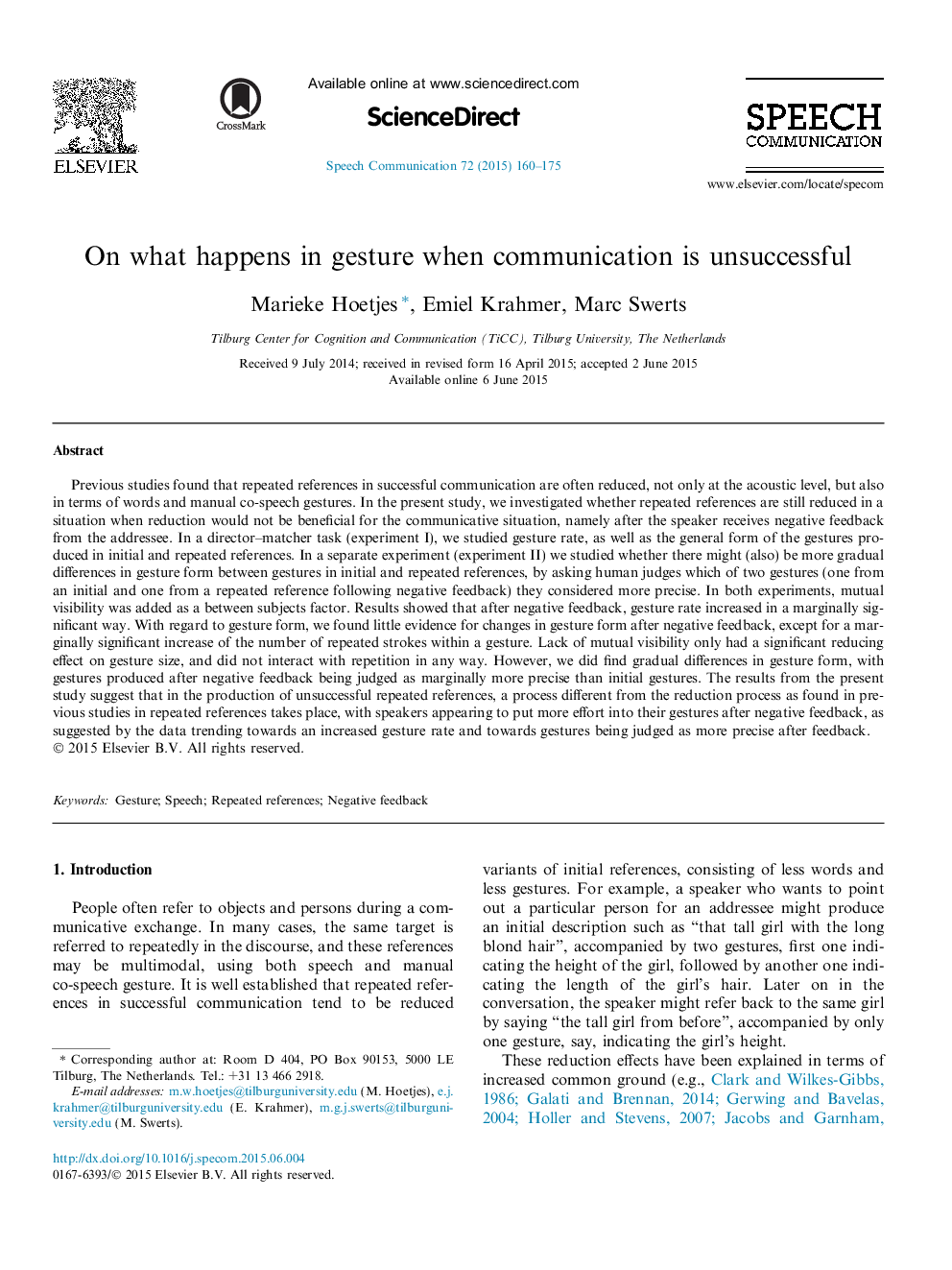| Article ID | Journal | Published Year | Pages | File Type |
|---|---|---|---|---|
| 6961065 | Speech Communication | 2015 | 16 Pages |
Abstract
Previous studies found that repeated references in successful communication are often reduced, not only at the acoustic level, but also in terms of words and manual co-speech gestures. In the present study, we investigated whether repeated references are still reduced in a situation when reduction would not be beneficial for the communicative situation, namely after the speaker receives negative feedback from the addressee. In a director-matcher task (experiment I), we studied gesture rate, as well as the general form of the gestures produced in initial and repeated references. In a separate experiment (experiment II) we studied whether there might (also) be more gradual differences in gesture form between gestures in initial and repeated references, by asking human judges which of two gestures (one from an initial and one from a repeated reference following negative feedback) they considered more precise. In both experiments, mutual visibility was added as a between subjects factor. Results showed that after negative feedback, gesture rate increased in a marginally significant way. With regard to gesture form, we found little evidence for changes in gesture form after negative feedback, except for a marginally significant increase of the number of repeated strokes within a gesture. Lack of mutual visibility only had a significant reducing effect on gesture size, and did not interact with repetition in any way. However, we did find gradual differences in gesture form, with gestures produced after negative feedback being judged as marginally more precise than initial gestures. The results from the present study suggest that in the production of unsuccessful repeated references, a process different from the reduction process as found in previous studies in repeated references takes place, with speakers appearing to put more effort into their gestures after negative feedback, as suggested by the data trending towards an increased gesture rate and towards gestures being judged as more precise after feedback.
Keywords
Related Topics
Physical Sciences and Engineering
Computer Science
Signal Processing
Authors
Marieke Hoetjes, Emiel Krahmer, Marc Swerts,
